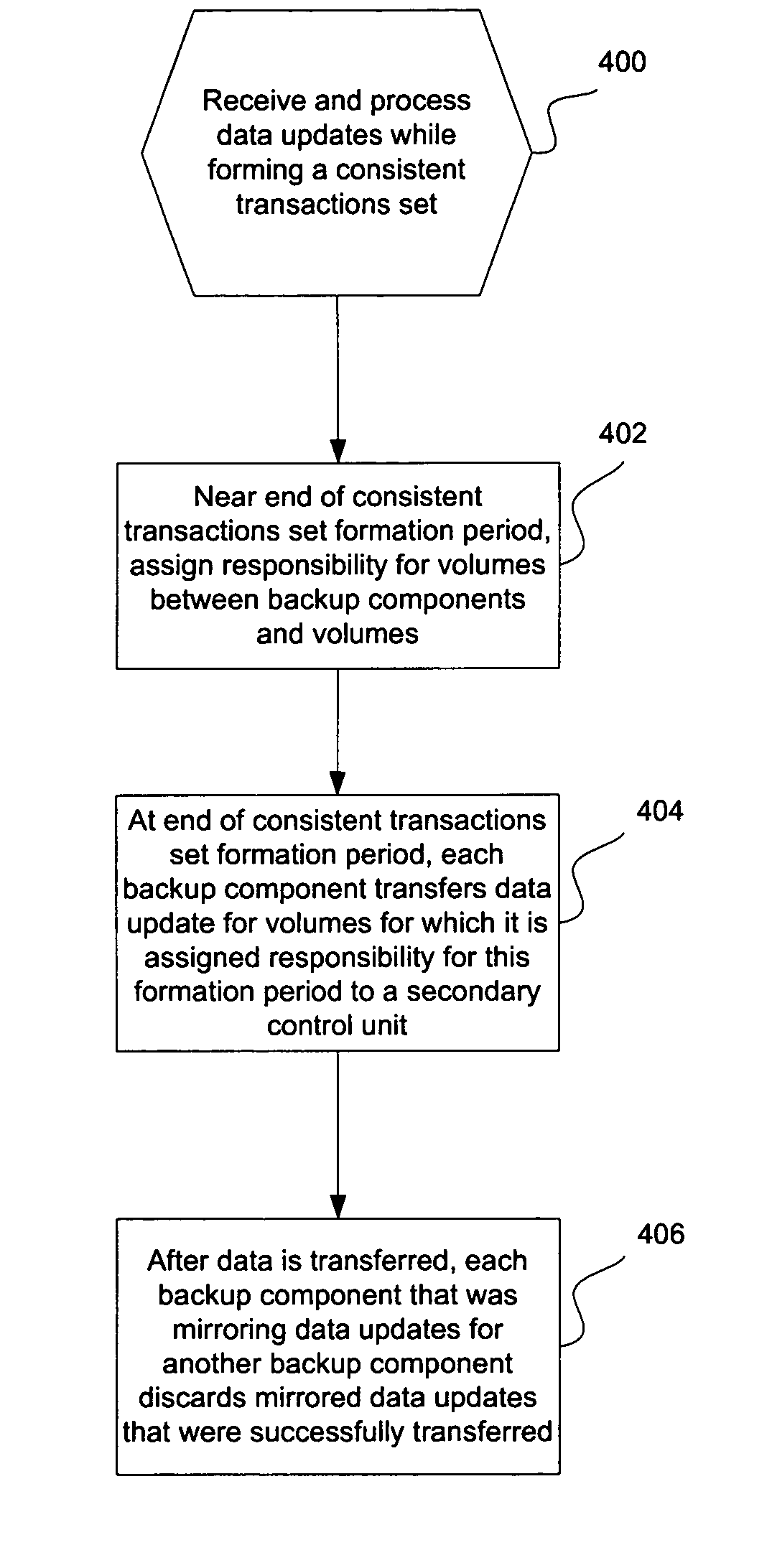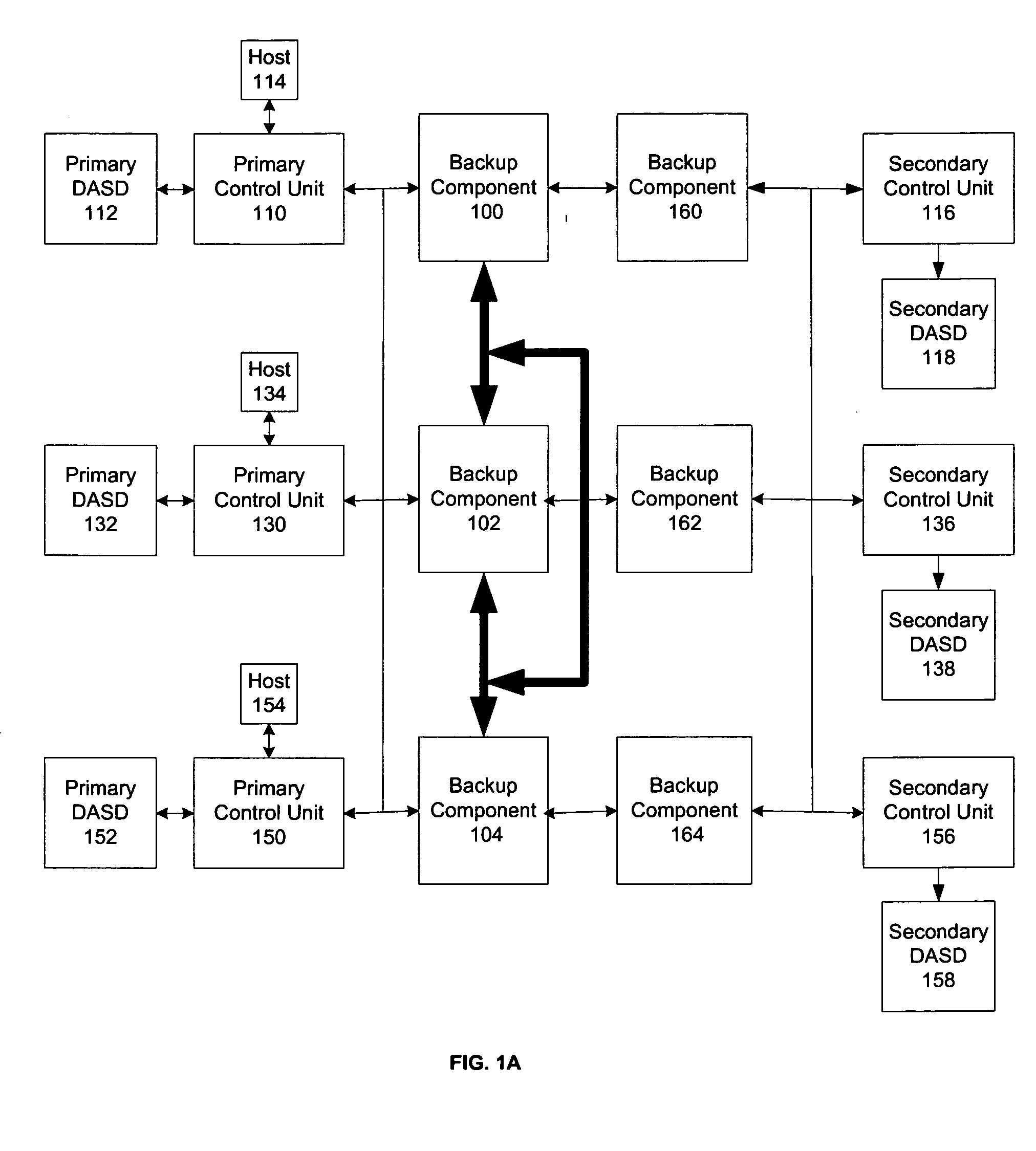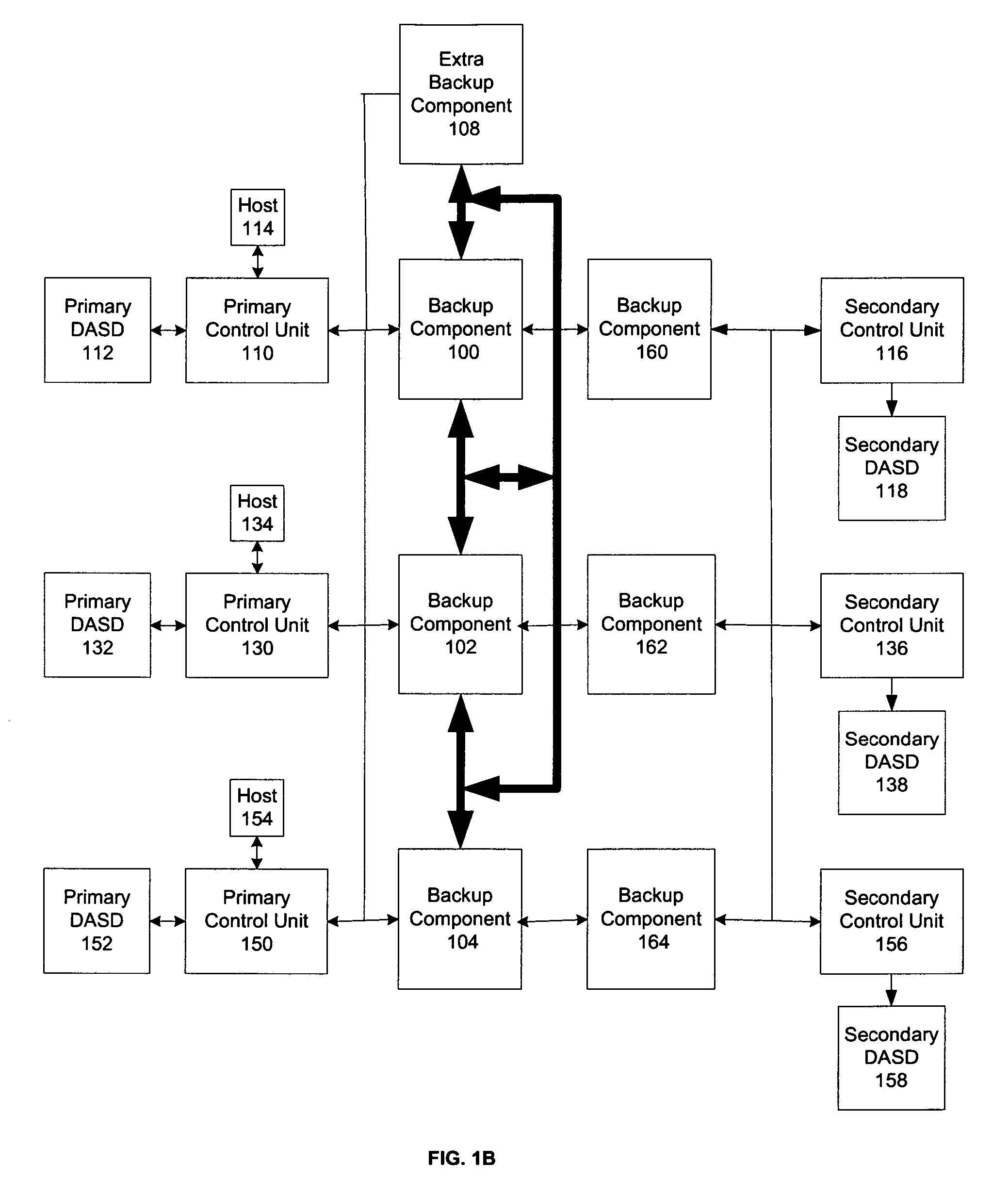Method, system, and program for a system architecture for an arbitrary number of backup components
- Summary
- Abstract
- Description
- Claims
- Application Information
AI Technical Summary
Benefits of technology
Problems solved by technology
Method used
Image
Examples
Embodiment Construction
[0023] In the following description, reference is made to the accompanying drawings which form a part hereof and which illustrate several implementations of the present invention. It is understood that other implementations may be utilized and structural and operational changes may be made without departing from the scope of the present invention.
[0024] Implementations of the invention provide a system architecture for an arbitrary (“n”) number of cooperative backup components. Each backup component may receive data updates from one or more primary sources (e.g. from a storage server via PPRC or from a host via a forked write). Each backup component mirrors incoming data updates to at least one other backup component to avoid a single point-of-failure. The term “mirror” may be described as sending a copy of the data update to another backup component. Although examples herein may refer to mirroring data updates to one backup component merely for illustration, implementations of the...
PUM
 Login to View More
Login to View More Abstract
Description
Claims
Application Information
 Login to View More
Login to View More - R&D
- Intellectual Property
- Life Sciences
- Materials
- Tech Scout
- Unparalleled Data Quality
- Higher Quality Content
- 60% Fewer Hallucinations
Browse by: Latest US Patents, China's latest patents, Technical Efficacy Thesaurus, Application Domain, Technology Topic, Popular Technical Reports.
© 2025 PatSnap. All rights reserved.Legal|Privacy policy|Modern Slavery Act Transparency Statement|Sitemap|About US| Contact US: help@patsnap.com



